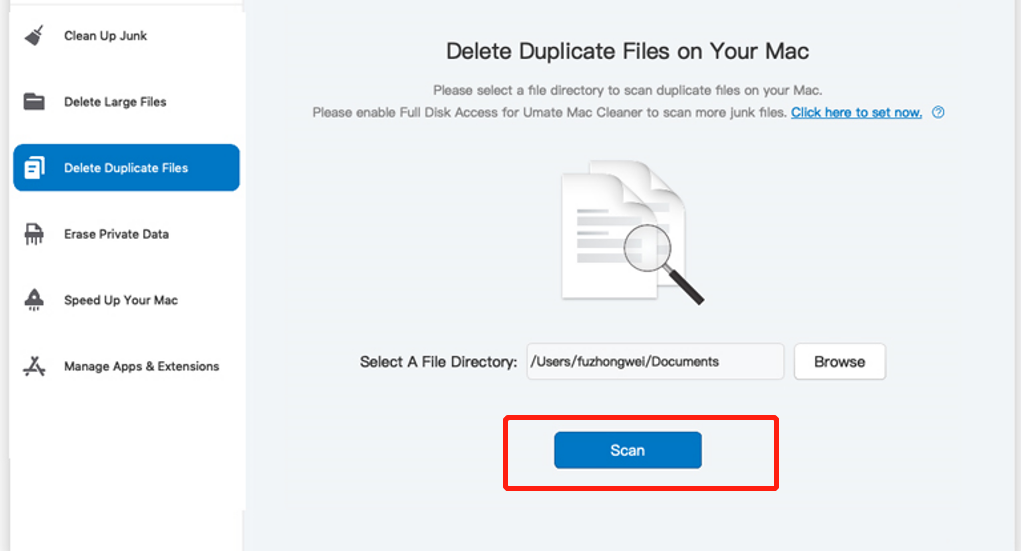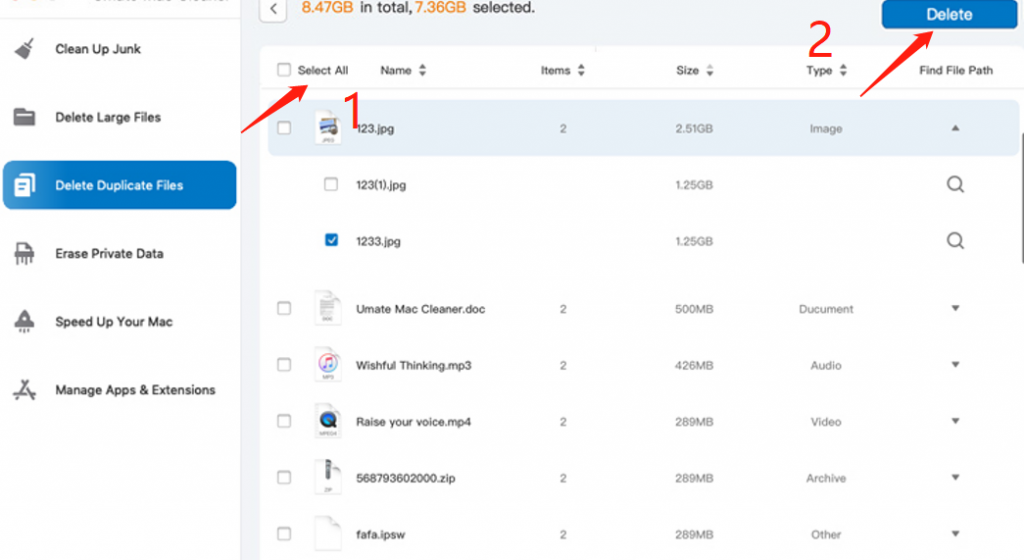Have you ever come across an image and wanted to know more about it or find similar images? Or maybe you’re trying to identify the source of an image or verify its authenticity. This is where reverse image search on Mac comes in handy.
Reverse image search is a feature that allows you to upload an image or enter an image URL to search for similar images online. It’s a great tool for photographers, graphic designers, journalists, and anyone who works with images on a regular basis. In this blog post, we’ll discuss how to use reverse image search on Mac and why you need it.
Part 1: How to Use Reverse Image Search on Mac
There are several ways to use reverse image search on Mac. Here are the most common methods:
Using Google Images
Google Images is the most popular reverse image search engine. Here’s how to use it on your Mac:
- Go to Google Images (images.google.com) in your web browser.
- Click on the camera icon in the search bar.
- You can either drag and drop the image you want to search for or enter the image URL.
- Google will display a list of visually similar images along with websites where the image appears.
Using TinEye
TinEye is another popular reverse image search engine. Here’s how to use it on your Mac:
- Go to TinEye (tineye.com) in your web browser.
- Click on the Upload button.
- You can either drag and drop the image you want to search for or browse your files.
- TinEye will display a list of websites where the image appears.
Using Safari
If you use Safari as your web browser, you can use the built-in reverse image search feature. Here’s how:
- Right-click on the image you want to search for.
- Select “Search Google for Image.”
- Safari will display a list of visually similar images along with websites where the image appears.

Part 2: Why You Need Reverse Image Search on Mac
Identify the source of an image
Sometimes you may come across an image and want to know where it came from or who created it. Reverse image search can help you find the original source of the image and provide you with information about the image’s creator, copyrights, and usage rights.
Verify the authenticity of an image
In today’s digital age, it’s easy to manipulate images using photo editing tools. Reverse image search can help you verify the authenticity of an image by identifying if it has been altered or used in a fake news article or a scam.
Find similar images
Reverse image search can help you find visually similar images and related content. This is especially useful for photographers, graphic designers, and marketers who want to find inspiration or identify trends.
Part 3:How to Find Similar Images on Mac?
To find similar images on a Mac, you can use various built-in and third-party tools. One of the easiest ways is to use the “Duplicate” function in the Photos app, which can identify photos with similar content. You can also use the “Smart Album” feature to create an album of similar photos based on specific criteria, such as date, location, and keywords.
Another option is to use a third-party app like Gemini 2 or PhotoSweeper, which can scan your entire photo library and identify similar photos based on visual content. Finally, you can use reverse image search engines like Google Images or TinEye to find visually similar images online.
Part 4: How to Locate Similar Images with Google Images?
Google Image Search offers a convenient way to find visually similar images to a particular image. Here’s how you can use Google Image Search to locate similar images:
- Go to Google Images in your web browser.
- Click on the camera icon in the search bar, which will open up the image search options.
- You will see two tabs – “Paste image URL” and “Upload an image”. Choose one of the options based on where your image is stored.
- If you choose “Paste image URL”, copy the URL of the image you want to find similar images of and paste it in the search bar. If you choose “Upload an image”, click on “Choose File” and select the image file from your device.
- Click the “Search by image” button to initiate the search.
Google will provide you with a list of visually similar images to the one you uploaded or pasted the URL of. You can browse through the results and click on any of the images to see more details about it or visit the webpage where it’s located. Note that this feature may not work perfectly for all images, and you may need to experiment with different images or adjust the search settings to get the results you’re looking for.

Part 5: How to Find Similar Images via Yandex Reverse Image Search
Yandex is a Russian search engine that provides a reverse image search functionality that allows users to find similar images to a particular image. Here’s how you can use Yandex to locate similar images:
- Go to the Yandex Images page in your web browser.
- Click on the camera icon in the search bar, which will open up the reverse image search options.
- You will see two tabs – “Upload an image” and “Paste image URL”. Choose one of the options based on where your image is stored.
- If you choose “Upload an image”, click on “Choose file” and select the image file from your device. If you choose “Paste image URL”, copy the URL of the image you want to find similar images of and paste it in the search bar.
- Click on the “Search” button to initiate the search.
Yandex will provide you with a list of visually similar images to the one you uploaded or pasted the URL of. You can browse through the results and click on any of the images to see more details about it or visit the webpage where it’s located. Note that Yandex may provide results in Russian, so you may need to use a translation tool to understand the search results. Also, similar to other search engines, the accuracy of the results can vary depending on the image quality and availability on the web.

Other Reverse Image Search Engines to Find Similar Images
Apart from Google and Yandex, there are several other reverse image search engines that you can use to find similar images:
Bing Image Match: Bing Image Match is Microsoft’s reverse image search engine that allows users to find similar images by uploading an image or providing an image URL. It provides visually similar images along with the webpage where the image was found.
TinEye: TinEye is a reverse image search engine that allows users to find where an image appears on the web. It uses image recognition technology to locate exact and modified copies of an image.
Social Catfish: Social Catfish is a reverse image search engine that focuses on finding images that are used in social media profiles. It allows users to upload an image or enter an image URL to find out where the image has been used on social media.
Pinterest Lens: Pinterest Lens is a visual search tool that allows users to find similar images on Pinterest by taking a photo or uploading an image. It provides visually similar images and suggests related search terms.
Reverse Image Search by SmallSEOTools: Reverse Image Search by SmallSEOTools is a free online tool that allows users to find similar images by uploading an image or providing an image URL. It uses multiple search engines to provide the best possible results.
These are just a few examples of reverse image search engines available online. You can try using these or other similar tools to find visually similar images to the one you’re interested in.

BEST ALTERNATIVE: Mac Cleaner
Mac Cleaner is software that automatically detects and removes unnecessary files, including DS_Store files, from your computer. You can use Mac Cleaner’s Duplicate Finder feature to find duplicate images on your Mac. Here are the steps:
Step #1: Set Up Mac Cleaner on Your Computer/Laptop
Set up Mac Cleaner on your computer by downloading the DMG file from the Mac Cleaner download site and following the onscreen instructions. Mac Cleaner will open automatically after installation.

Step #2: Pick from Six Modules
Choose from six modules on the left side of the interface: Clean Up Junk, Delete Large Files, Delete Duplicate Files, Erase Private Data, Speed Up Your Mac, and Manage Apps & Extensions.
Click Scan/Start Now/View Items depending on the module you selected. Follow the instructions for each module to search for files, Images, or other items you want to remove.

Step #3: Click Scan/Start Now/View Items
Select the files or items you want to delete according to the selection process for each module.
Note that the files, programs, or items you’ll find will vary depending on the module you chose. Select the folder or disk where your images are stored that you want to scan for duplicates. You can also choose to scan your entire Mac. Choose “Images” or “Photos” as the file type to scan for duplicates.

Step #4: Click the Blue Button
Once the scan is complete, Mac Cleaner will display a list of duplicate images. Review the list of duplicates and select the ones you want to delete. Click the “Delete” button to delete the selected duplicate images.

Mac Cleaner also automatically selects duplicate files for deletion based on certain criteria, such as file size and creation date. You can choose to use this feature if you want to quickly find and delete duplicate images without manually reviewing them. However, be sure to double-check the selection before confirming the deletion to avoid deleting important files.
Conclusion
Reverse image search on Mac is a useful tool for anyone who works with images. It can help you identify the source of an image, verify its authenticity, and find visually similar images. Try it out and see how it can benefit your work.
Latest Articles